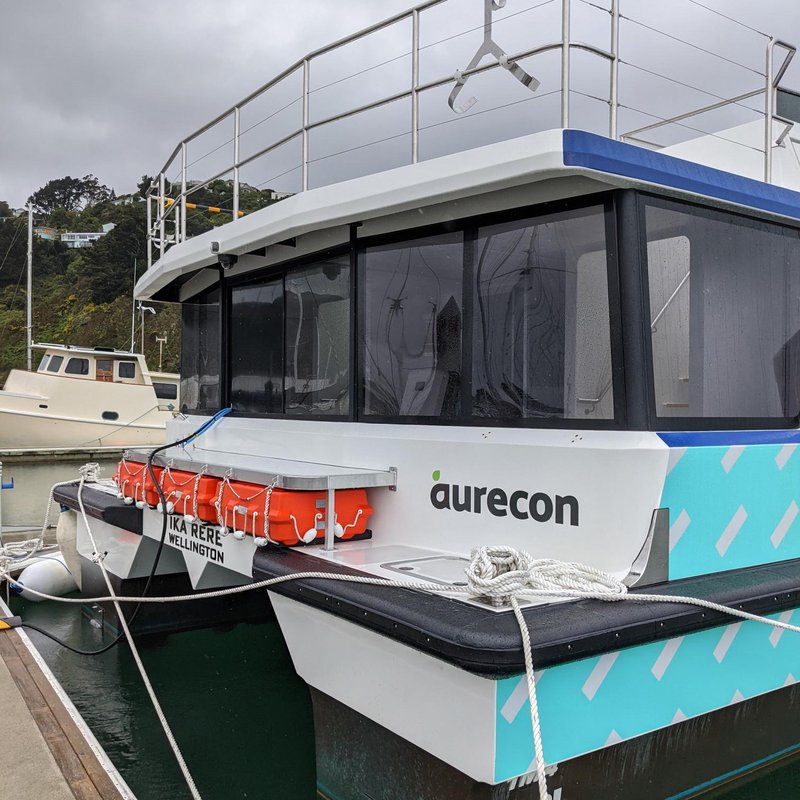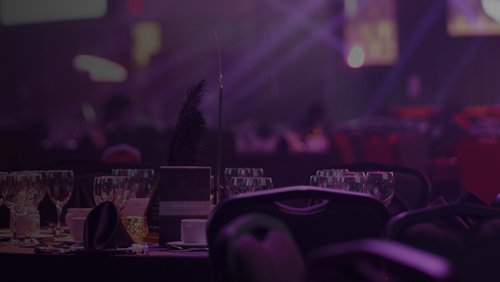15 Feb 2022
In December, Wellington witnessed a significant milestone towards the decarbonisation of transport with the launch of Ika Rere – the Southern Hemisphere’s first fully electric, high-performance passenger ferry. We speak to Alistair Crossling, Associate Modelling and Analytics at Aurecon, who's leading the business case for the further development of electric passenger ferry services in Wellington.
Why has Aurecon seen this as an important project they want to be involved in? How was it instigated and how was it prioritised?
Decarbonisation is probably the most important priority for transport, but the real challenge is, how it can actually be achieved.
That’s what makes this project so important and so interesting. It wasn’t just a pilot or research project, we were actually working towards a service being in operation, something that is a real part of the Wellington transport network.
The only way to really realise the potential of electric technology is to openly tackle some of the hurdles that are holding it back – how clean it really is, how much better is it than existing transport modes, what are it’s strengths and weaknesses.
This project has actually allowed us to work through those on a real use case. For example, an unexpected challenge encountered was that all current maritime regulations are based around diesel-powered ferries. It was only by pursuing certification for Ike Rere that this hurdle was uncovered and could be resolved.
Although Aurecon brought experience from other transport projects, this was the first time we had ever been involved in a marine electrification scheme, so it wasn’t just about us providing insight, it was a huge learning opportunity. As we do more of these, that experience will just grow and grow.
How did you get the business case across the line?
The business case is currently out for review, but it’s just like any other – Aurecon needs to look beyond the ferry’s novelty and public appeal and demonstrate a really strong transport case. And when we say that it is lower carbon and zero emissions, we need to prove that.
In terms of the risks, you can go and buy an EV today, the technology is proven and already in use. So, in mitigating any risks, we have drawn heavily on learnings from the automotive industry and others.
What steps were involved in getting others onboard?
I think one of the challenges that we have with future transport is that it can still be seen as a novelty, and there is always some skepticism when it comes to new novel projects such as this one. But the technology is now well established, and in general outperforms the existing – it’s faster, it’s quieter, it’s a better passenger experience. It’s no longer experimental – we are past that phase, and this project is about making electric technology a normal part of the public transport network.

How does Aurecon plan on supporting further development of electric ferries? Where do you see things heading?
Wellington is probably one of the smaller passenger ferry markets, so the potential this technology has is unlimited – Tāmaki Makaurau obviously, but also, for tourism in the South Island and places like Taupō. These are significant markets, each with nuances, but where Aurecon could apply the learnings from this project.
The more we learn from assessing these different use cases, the more we can share with others, and ultimately, get the electrified marine transport market up and running.
How much carbon do you expect the introduction of electric ferries to save? How did Aurecon quantify the Carbon savings?
As part of the business case, we did a lifecycle carbon assessment, which was probably the most interesting part of the whole project, as it allowed us to actually quantify the benefits of this technology.
There are many myths and perceptions in this space, for example battery technology is often criticised as polluting, and some say that the ongoing benefits won’t outweigh the initial outlay in electric technology, but the numbers showed otherwise.
If you compare a seemingly clean service like a hybrid taxi or a ride-share, the difference in both embodied and ongoing carbon emissions is dramatic.
I think what’s made this really interesting is that we have quantified it and assessed the carbon emissions from the composite hull, how much carbon is used in the battery manufacturing process, and compared it to an equivalent for an internal combustion engine (ICE) or an aluminum hull ferry or a diesel bus, so that we are actually making like-for-like comparisons.
Interestingly, our work showed that electric buses are still highly competitive, so it shows it’s not just electric ferries, it’s electric public transport in general that is going to make the biggest difference to overall carbon emissions.
One of the largest criticisms of electric transport is the battery disposal. While it is true that they are forecast to end their life as battery to power cars or boats in five, 10 years or more, this is not actually the end of their life. They can be recycled for other purposes, such as home electric storage.
The Ministry of the Environment is currently consulting on a product stewardship scheme for large batteries, where these will go through different phases over their life – beginning perhaps in an electric bus or ferry and then taking on life as something like static storage, where its efficiency isn’t as important, for example storing solar electricity in homes and flattening out the energy curve.
Globally, where do you think the biggest gains might be realised for electric ferries?
Harbourside cities are a natural fit – obviously Tāmaki Makaurau, Te-Whanganui-a-Tara, Brisbane, Sydney – cities where commuter ferries are a key part of the transport system. But equally, tourism is an important opportunity, particularly for us here in New Zealand – electric vessels would better protect our pristine lakes, and deliver an enhanced passenger experience.
New Zealand has a high number of boats per capita. Is there case to incentivise a market for electric boats and leisure craft used for private purposes? What might be needed for that?
That’s a really interesting question, because we have had the recent subsidies of EVs to incentivise the transition away from ICE vehicles, but NZ’s geography means there are areas where EV travel simply isn’t possible due to lack of road access, for example properties in Marlborough Sounds. So, in that case, the cleaner alternative would be an electric boat.
Maybe these incentives don’t need to be mode-specific – they could be for land, sea or even air-based travel.
It’s brilliant to see Aurecon's strong commitment to supporting the transport sector to decarbonise. Do you have any other initiatives in the climate space that you're working on?
Climate change is one of the biggest challenges facing the world today and for both private and public business in New Zealand, transition risk is right up there. We are working with a number of organisations to help on their low carbon transition journey.
Aurecon’s New Zealand Managing Director, Tracey Ryan, chairs the International Federation of Consulting Engineers (FIDIC) Sustainable Development Committee. Aurecon has been included in the expert delivery panel for the Carbon Neutral Government Programme to assist NZ’s public sector to decarbonise, and in EECA’s Energy Transition Accelerator Programme to assist large energy-using businesses to reduce emissions.
Aurecon has a goal of net zero carbon in our operations by 2025 – ahead of the Climate Change Response (Zero Carbon) Amendment Bill (2019) 2050 net zero emissions target.
Aurecon is a signatory to the Climate Leaders Coalition, which aims to help New Zealand transition to a low emissions economy and create a positive future for New Zealanders, business and the economy. We have also signed up to the UN Global Compact to demonstrate our commitment to the UN Sustainable Development Goals and provide clear focus to sustainable development.







